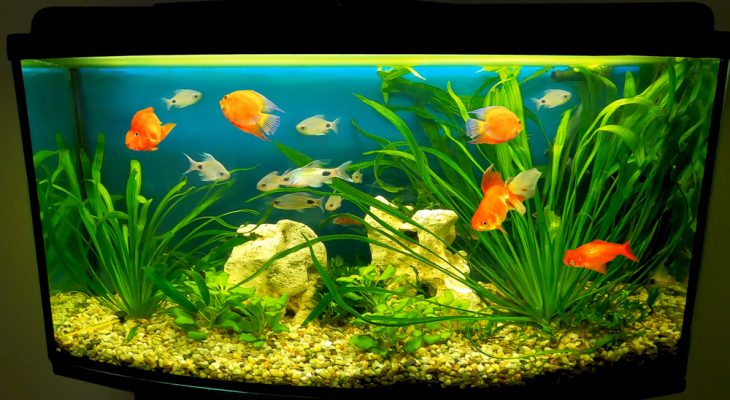How To Remove Tannins From Aquarium Water: A Complete Guide
As someone passionate about maintaining an aquarium, you might have come across a situation where your tank water takes on a brown or yellowish hue, even without taking the driftwood out. This phenomenon is attributed to tannins, organic substances present in driftwood and similar materials, capable of seeping into your tank and tinting the water akin to tea. Although tannins don’t pose a direct threat to your aquatic friends, they can alter the visual clarity of your aquarium and impact parameters like the water’s pH level and hardness. The good news is, there are effective strategies for eliminating tannins from your aquarium, such as employing activated carbon filters or replacing the water with distilled or municipal water. We will delve into the various techniques for tackling tannins, aiming to enhance both the visual appeal and environmental quality of your aquarium water.
Understanding Tannins In Your Aquarium And The Benefits They Provide
Tannins are organic compounds that can be found in various sources, such as a piece of driftwood, that can leach tannic acid into your aquarium’s water. While they can discolor the water and affect the water parameters, they can also provide numerous benefits for your aquarium. Tannins can help soften the water, create a natural habitat for aquarium plants, and provide a stress-reducing environment for fish. However, if you want to remove the color and get rid of tannins in your tank, you can use various methods such as water changes, using activated carbon, or adding filter media that can help remove them. It’s important to remember that tannins can be a source of water softening, and you may want to keep some in your tank if you like the look of natural driftwood.
Methods To Remove Tannins From Driftwood And Aquarium Water
Tannins can be a beautiful addition to your aquarium, but too much can lead to discolored water and changes in water chemistry. If you want to remove tannins from driftwood or aquarium water, there are several methods to consider. One way is to do a water change with distilled or pure water, which can dilute the tannins in the tank. Using activated carbon in an aquarium filter is another effective method, as it can absorb and remove tannins from the water. Additionally, adding alkaline water can help neutralize acidic water that can leach tannins into the tank. It’s important to remove tannins if they are harming the fish, but if you want to keep the benefits of tannins, consider keeping some in your tank, especially if you like the natural look of driftwood.
Reducing Tannins In Your Aquarium Without Removing Driftwood
Tannins can provide numerous benefits to your aquarium, but sometimes you may need to reduce the amount of tannins without removing the driftwood. One way to do this is to use activated carbon in an aquarium filter, which can absorb and remove tannins from the water. Another way is to do regular water changes with distilled or soft water, which can dilute the tannins in the tank. It’s important to monitor the water parameters and the level of tannins in your aquarium, as high levels of tannins can affect water clarity and pH levels. Ultimately, the decision to keep or remove tannins should depend on your personal preference and the needs of your aquarium’s inhabitants.
Using Protein Skimmers To Remove Tannins From Aquarium Water
Protein skimmers are a popular tool used in aquariums to remove organic waste from the water, but they can also be used to remove tannins. Tannins can contribute to the yellow or brown discoloration of aquarium water, and a protein skimmer can help remove them by increasing the oxygenation and agitation of the water. The skimmer can help remove the tannins by trapping and removing the organic compounds, resulting in clearer water. It’s important to note that a protein skimmer may not completely remove all tannins, especially if there is a lot of driftwood in the tank. However, it can be an effective method for reducing the amount of tannins in the water.
The Pros And Cons Of Wanting Tannins In Your Aquarium
Tannins can provide numerous benefits to your aquarium, but they also come with their own set of pros and cons. Tannins can help simulate a natural environment for fish and create a stress-reducing habitat. They can also help soften the water, lower the pH level, and provide a natural food source for aquarium plants. However, too many tannins can affect water clarity and discolor the water, leading to a brown or yellowish appearance. Some fish may not tolerate acidic water and the tannins could harm them. The decision to keep tannins in your aquarium should depend on your personal preference and the needs of your aquarium’s inhabitants.
Balancing Tannin Levels In Your Aquarium For Healthy Fish
Balancing tannin levels in your aquarium is crucial for maintaining healthy fish. High levels of tannins can affect the pH level, water clarity, and harm fish. To balance tannin levels, regular water changes are necessary, and distilled or pure water can help dilute the tannins in the tank. Using activated carbon in the aquarium filter can also help remove tannins from the water. Monitoring the level of tannins in the tank and the water parameters can help ensure the aquarium’s inhabitants are in a healthy environment. It’s important to remember that some fish may need acidic water with tannins, so removing all tannins may not be necessary.
Conclusion
In conclusion, tannins in an aquarium can alter the look of aquarium water and change the pH of the water, causing discoloration and potential issues for aquatic life. Aquarium owners can effectively remove tannins from water by changing the water, using activated carbon, or using distilled water in the tank. To prevent the release of tannins, it’s essential to properly prepare a piece of wood, like Malaysian driftwood or African, before placing it inside the aquarium. Although some aquarium hobbyists appreciate the natural effects of tannins, others may want to remove them from water to maintain a clear and pristine water tank. Regardless of your preference, understanding the source of tannins and the fastest way to remove tannins from an aquarium will help ensure a thriving and healthy environment for your aquatic friends.
Frequently Asked Questions (FAQs)
If you’ve still got questions about how to remove tannins from aquarium water, then these may help:
How Long Does It Take To Remove Tannins?
The time it takes to remove tannins from aquarium water depends on factors like the amount of tannins, wood type, and method used. Using activated carbon is a popular way of removing tannins, typically showing improvement in water clarity within a few days. Consistently changing tank water and avoiding wood types like Malaysian driftwood and African, known for leeching tannins, can also help maintain clear water.
How Do You Get Tannins Out Of A Fish Tank?
To get tannins out of a fish tank, use activated carbon in your aquarium’s filter system, which effectively removes tannins from the water. Regular water changes help maintain optimal water quality and reduce tannin concentrations. For those who want to keep driftwood in their tank without removing it, consider pre-soaking the wood to release excess tannins before adding it to the aquarium. By consistently monitoring water clarity and addressing tannin issues, you can maintain a healthy and visually appealing aquatic environment.
What Chemical Removes Tannins From Aquarium Water?
Activated carbon is an effective chemical filter media that removes tannins from aquarium water. It works by adsorbing dissolved organic compounds, including tannins, from the water column, thus improving the clarity and quality of the water. Other chemical filtration methods, such as polyfilter and Purigen, can also help to remove tannins.
What Is The Best Tannin Removal?
The best method for tannin removal depends on the source of the tannins and the specific situation. However, a combination of water changes and the use of activated carbon or other chemical filtration media can effectively remove tannins from aquarium water. It’s also important to address the root cause of tannin production, such as overfeeding or the use of certain types of wood or leaves in the tank.
Does Uv Filter Remove Tannins?
UV filters do not remove tannins from water. Their primary function is to eliminate harmful microorganisms by disrupting their DNA. To effectively remove tannins, consider using activated carbon filters, ion exchange resins, or reverse osmosis systems for better water clarity and taste.





